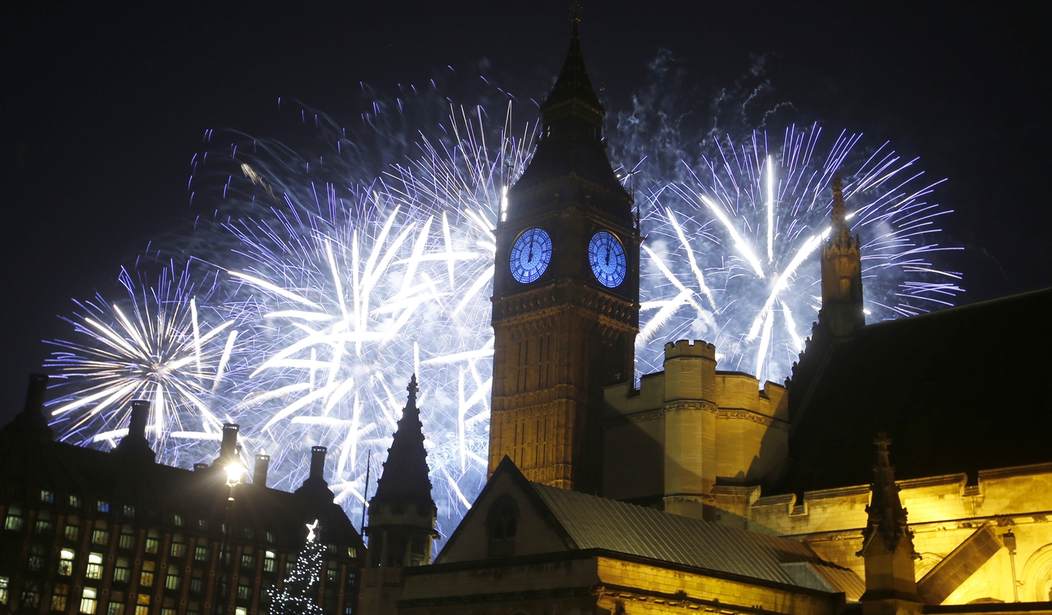As 2022 passes the torch to 2023, the world prepares once again to mumble through the traditional New Year’s Eve song, “Auld Lang Syne.” So without further ado, here’s a timely explainer of the song title’s meaning, the lyrics, and how it came to be one of the most famous tunes in the English-speaking world and beyond.
“Auld Lang Syne” was first written down by Scotland’s national poet, Robert Burns. Burns never claimed authorship of the poem, but rather said he transcribed it after listening to an “old man” singing it. “The following song, an old song, of the olden times, and which has never been in print, nor even in manuscript until I took it down from an old man,” Burns was quoted as explaining.
The work is likely a composite of old Scottish folk songs that Burns collected and knit together for posterity in 1788. Comparable efforts may have been made before his. Britannica notes that “Poems with similar words existed before the time of Burns. Sir Robert Ayton, who died in 1638, wrote Old Long Syne, a poem that was first published in 1711 and is sometimes cited as Burns’s inspiration.”
Likewise, several existing melodies were applied to the Burns poem before the familiar tune we know today was published by George Thompson in a 1799 compilation of Scottish songs. The song eventually became the official theme of the Scottish New Year celebration, called Hogmanay, before spreading to North America in the early 20th century.
Related: You Have to Watch Rand Paul’s ‘Twas the Week Before Christmas’
So what does “Auld Lang Syne” mean?
The literal translation from Scottish to English is “old long since” — or as one might say, the good old days, rare old times, back in the day, etc. The song is basically about raising a glass in salute to times gone by in which the present company shared adventures and experiences.
“Many variations of wording can be found in both versions of ‘Auld Lang Syne’ as they have been set down over the years,” says Brittanica. “In fact, surviving manuscript copies in Burns’s own hand are not identically worded.”
Here are the lyrics as written in the Scots language by Burns:
Should auld acquaintance be forgot,
And never brought to mind?
Should auld acquaintance be forgot,
And auld lang syne?(Chorus)
For auld lang syne, my jo,
For auld lang syne,
We’ll tak a cup o’ kindness yet,
For auld lang syne.And surely ye’ll be your pint-stowp!
And surely I’ll be mine!
And we’ll tak a cup o’ kindness yet,
For auld lang syne.We twa hae run about the braes
And pu’d the gowans fine;
But we’ve wander’d mony a weary foot
Sin auld lang syne.We twa hae paidl’d i’ the burn,
Frae mornin’ sun till dine;
But seas between us braid hae roar’d
Sin auld lang syne.And there’s a hand, my trusty fiere!
And gie’s a hand o’ thine!
And we’ll tak a right guid willy waught,
For auld lang syne.
And the English version:
Should old acquaintance be forgot,
And never brought to mind?
Should old acquaintance be forgot,
And old lang syne?(Chorus)
For auld lang syne, my dear,
For auld lang syne,
We’ll take a cup of kindness yet,
For auld lang syne.And surely you’ll buy your pint cup!
And surely I’ll buy mine!
And we’ll take a cup o’ kindness yet,
For auld lang syne.We two have run about the slopes,
And picked the daisies fine;
But we’ve wandered many a weary foot,
Since auld lang syne.We two have paddled in the stream,
From morning sun till dine;
But seas between us broad have roared
Since auld lang syne.And there’s a hand my trusty friend!
And give me a hand o’ thine!
And we’ll take a right good-will draught,
For auld lang syne.
From all of us at PJ Media, have a happy New Year, and we’ll see you in 2023!










Join the conversation as a VIP Member